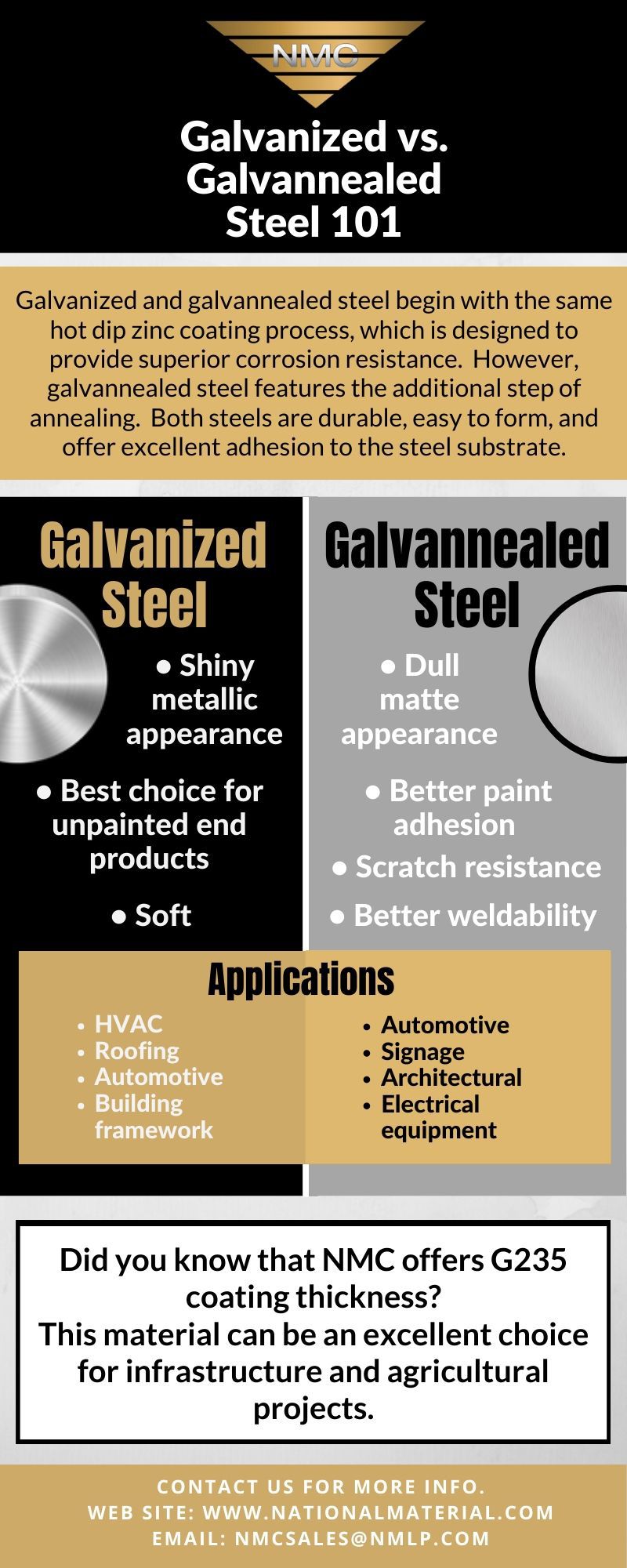When to Use Pre-Galvanized Steel: A Comparative
Choosing the right steel product is imperative, and considerations such as “galvanized steel,” “pre-galvanized,” and “hot-dipped galvanized” are part of the decision-making process.
This guide is intended to break down the key differences between pre-gal and other galvanized options, including hot dipping, electrogalvanizing, and galvannealing. Our goal is to extend our expertise – sharing benefits, uses, and when it’s better than other galvanized metals.
Pre-Galvanized Steel: What You Need to Know
What gives a steel sheet a shiny, almost silvery finish? The power of galvanization. It’s a process where steel gets a zinc coating which protects the steel from its biggest enemy—rust. But in the world of galvanized steel, there are different types.
Inside the steel processing plant, steel is zinc-plated early on before it’s cut. This “in-line galvanizing” process creates an even zinc layer, making pre-galv a great choice for applications that expose most of the surface.
Here’s how pre-gal stacks up against its familiar competitors:
Hot-Dipped Galvanized — This tough competitor gets dipped in molten zinc. This results in a thicker coating, which is ideal for harsh places. But, if we expose cut edges, we must make the process more suitable for complex shapes.
Electrogalvanized — This uses electricity to create a thin, super-uniform zinc layer. It is great for small parts and tight spaces, but it might not hold up well in areas with a lot of wear and tear.
When Does Pre-Galvanized Steel Shine Brightest?
Manufacturers use pre-galv steel in many applications. They use it for its mix of low cost, good rust resistance, and formability. Here are some of the most common uses:
Construction
Roofing and other building applications. Manufacturers use it to make roofing sheets, gutters, flashing, and downpipes. It offers a lightweight, durable, and weather-resistant solution for roofs.
Furniture
Pre-galvanized steel is a great material for constructing furniture due to its high-quality 3D designs, accurate steel designs, and affordability. It may also utilize nano-environmental technology, which provides additional benefits. This material is commonly used for making outdoor furniture, such as lounge sets and benches, due to its excellent resistance to rust and corrosion, making it ideal for outdoor usage.
Appliance Parts
Many appliance components such as washing machine tubs, dryer parts, and refrigerator components can all use pre-galvanized steel. Manufacturers choose it for its rust resistance and formability.
Automotive Parts
Pre-galvanized steel is also used in vehicle manufacturing. Manufacturers can make fender panels and other parts from it, which fights rust on parts exposed to the elements.
Galvanizing vs. Galvannealing
Now that we’ve explored the major points of pre-galvanized steel, you might be curious about other ways to add a zinc shield to steel. Let’s take a look into the world of galvanizing…
Think of galvannealing as a two-part origin story for steel. First, it goes through the familiar galvanizing process — a zinc bath dip to create a protective […]

